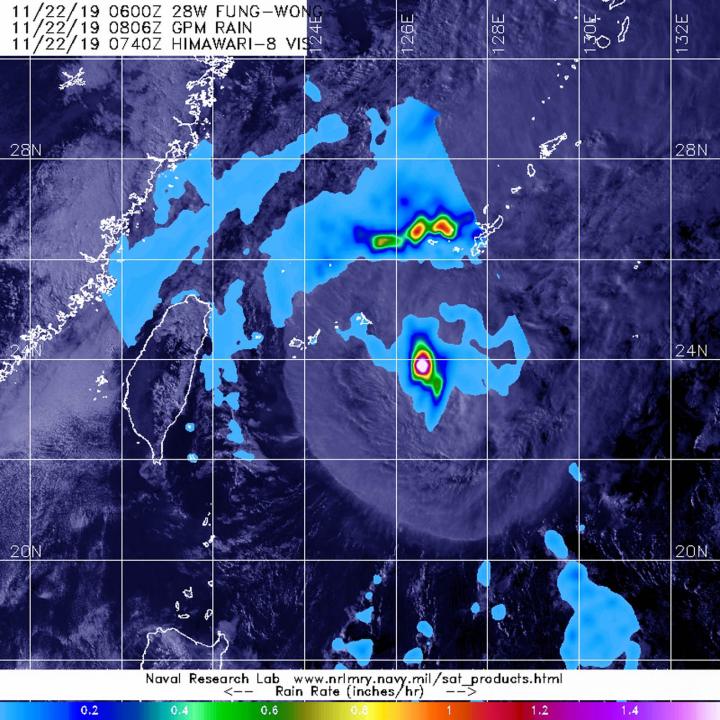
Credit: Credit: NASA/JAXA/NRL
NASA analyzed Tropical Storm Fung-Wong’s rainfall and found two small areas of moderate to heavy rainfall, despite being battered by strong wind shear.
NASA has the unique capability of peering under the clouds in storms and measuring the rate at which the rain is falling. Global Precipitation Measurement mission or GPM core passed over Fung-Wong from its orbit in space and measured rainfall rates throughout the storm on Nov. 22 at 3:08 a.m. EST (0808 UTC).
Heaviest rainfall was being pushed north of the center where it was falling at a rate of 1.6 inches (40 mm) per hour. Another area far north of the center showed heavy rainfall occurring at a rate of 1 inch (25 mm) per hour. Light rain was found throughout the rest of the storm.
In general, wind shear is a measure of how the speed and direction of winds change with altitude. Tropical cyclones are like rotating cylinders of winds. Each level needs to be stacked on top each other vertically in order for the storm to maintain strength or intensify. Wind shear occurs when winds at different levels of the atmosphere push against the rotating cylinder of winds, weakening the rotation by pushing it apart at different levels. Winds from the south were pushing against the storm and displacing the heaviest rainfall north of the center.
Seven hours later by 10 a.m. EST, the Joint Typhoon Warning Center noted that Fung-Wong had become devoid of the heavy rainfall that GPM found earlier. That’s an indication that the storm is continuing to weaken under the wind shear.
On Nov. 22 at 10 a.m. EST (1500 UTC), despite the wind shear, Tropical Storm Fung-Wong was holding onto tropical storm status with maximum sustained winds near 35 knots (40 mph/65 kph). Fung-Wong was located near latitude 24.8 degrees north and longitude 125.3 degrees east about 169 miles southwest of Kadena Air Base, Okinawa Island, Japan.
Fung-Wong is moving north-northeast and is expected to dissipate within 24 hours.
Typhoons and hurricanes are the most powerful weather event on Earth. NASA’s expertise in space and scientific exploration contributes to essential services
provided to the American people by other federal agencies, such as hurricane weather forecasting.
###
Both the Japan Aerospace Exploration Agency, JAXA and NASA manage GPM.
By Rob Gutro
NASA’s Goddard Space Flight Center
Media Contact
Rob Gutro
[email protected]
Original Source
https:/




